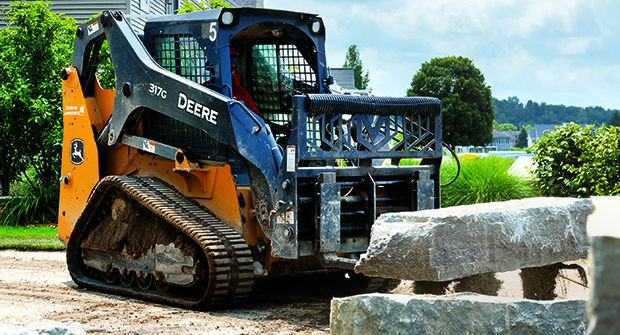Advice for going small
Contractors using small equipment say the versatility and maneuverability of small machines more than makes up for power limitations and maintenance costs, but they warn that going small can be a complex decision.
“We ran into problems with some attachments not working on compact track loaders the way we wanted,” Vugteveen says.
Manufacturers say the number and variety of attachments in the mini and compact spaces are growing rapidly, but contractors should carefully consider what tools they typically use and ensure that mini skid-steers and compact loaders have those options.

Deere’s Gribble says some contractors who have focused on new construction installations or other nonresidential work may not be used to the need to protect turf, and they may not be familiar with smaller loaders or the attachments they use.
“Get a better understanding of using smaller attachments,” Gribble says. “You’re probably going to have to move slower on the site. You’re going to have to understand how your operation is going to work.”

At Vermeer, Hutchinson says users should also know exactly how big and heavy some small equipment is. Just because a stand-on track loader is smaller than a ride-on unit, crews will still have to lay down plywood or pads to protect turf on many job sites.
He adds that the biggest piece of advice is to listen to the employees who will be using the equipment. With labor shortages hitting most landscape companies while demand for services skyrockets, owners should talk to employees about how compact and mini tools can let them complete more jobs while doing less physical labor.
If implemented well, Hutchinson says, “employees are happier at the end of the day, so that’s good for retention.”


